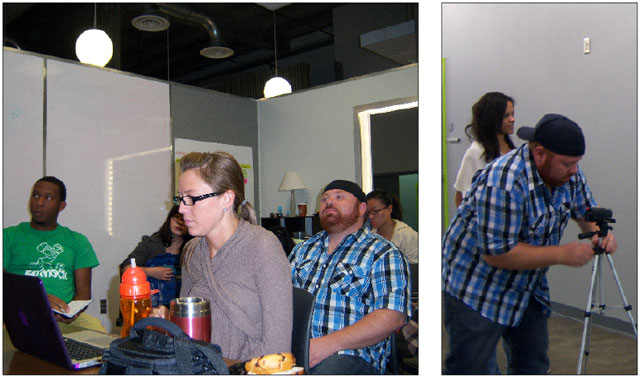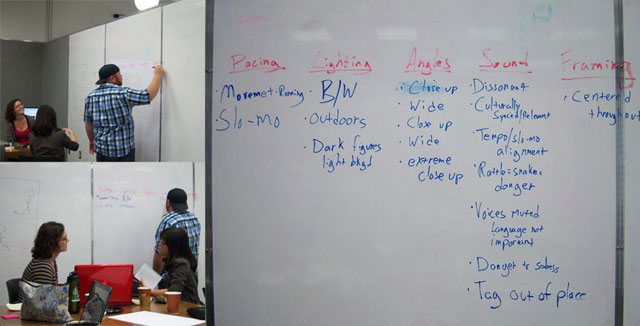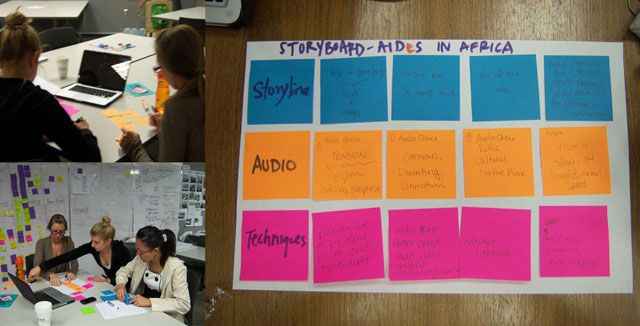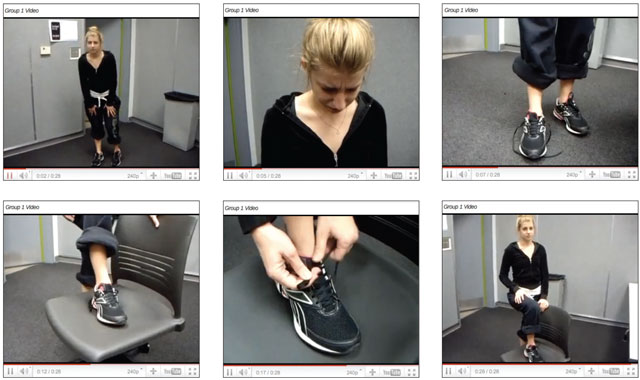Facilitating Creative Thinking
Facilitating the Creation and Evaluation of Video Projects in Education

Background
We live in a media saturated society where media affects the way that we interact with and understand the world around us. While the concept of media literacy has been around since the early 20th century, its only in the past 10 years that it has gained momentum and wide recognition in academia. Media Literacy is a two-fold process. First, one must posess the ability to understand, dissect, and critically analyze the information that is being presented. Second, one must be able to take that understanding and use it to create an effective and meaningful production. Oral and written communications are necessary skills in today’s world and are appropriately emphasized in our education system.
Media-based projects represent a way to communicate complex ideas to broader audiences. These types of projects have recently been infiltrating the academic world as accepted scholarly communication tools. However, a disconnect is present between the expectations of the professors that are assigning and evaluating the projects and the students who are asked to create them.
Scope
The main goal of this project was to facilitate creative thinking with a group in order to develop a rubric system for the design and evaluation of video projects. The components that made up the rubric system were taken directly from the results of the creative exercises. The secondary goal was to teach students the basics of videography so they would be more prepared to execute media projects in their classes.
We created an online pre-survey to assess the participants’ skills and experience with videography. This survey acted as registration for the workshop. After the workshop, we created a post-survey to gain feedback and insights on the workshop itself, and whether student’s perceptions and skills related to video have changed. Unlike the pre-survey, this survey was anonymous because we wanted to encourage honest responses.
Workshop Exercises
A Basic Videography website outlining the seminar was constructed so students could have a future reference point. Sections include The Basics, Techniques, Digital Storytelling, Storyboarding, Video Editing, and Exercises. All of these components were addressed in the workshop and could essentially be used as notes for the students during and following the session. The website link is: http://sites.google.com/site/basicvideography
After educating the students on basic elements of videography such as lighting, framing, audio, and storyboarding, we conducted two group exercises. The first exercise was exposing them to a video and having groups go through and dissect the basic elements based off of knowledge they had just learned.

Group A

Group B
The second exercise involved the groups setting out to storyboard and shoot a 1 minute video on how to tie their shoes by only editing within the camera (no post production video editing software was used). The students worked in groups of 4 and had 30 minutes to carry out this task.

Group 1 Video

Group 2 Video
Outcomes
Based on feedback from the students in the workshop and data collected from the exercises, a rubric was developed to assist faculty in grading student video projects. A group of faculty was asked to view the short video clips created in class, grade the videos with the rubric and provide feedback about both the videos and the rubric itself. The grades were based on the Savannah College of Art and Design (SCAD) grading scale. Faculty were allowed to determine the weight of each category in the rubrics and asked to explain their decisions. We would like to further test the rubric before we make any adjustments and finalize it.
The rubric we created can be adapted to fit projects in any class, becoming an integral part of the education system. Professors will be able to address form and content and weigh different elements based on specific project goals. Our rubric can serve as the basic framework that can be tailored and further developed.
A skill-building workshop series for students is absolutely something that can have a life beyond this quarter. The workshops can essentially take on any topic students wish to excel in that are not taught directly in courses. Workshops topics could include both hard and soft skills with topics such as intermediate videography, blogging, portfolio creation, poster presentation, public speaking tips, and interviewing skills. We are hoping this is the first of many workshops developed and delivered by students for their fellow classmates.
Check out the process book below to learn more:

Related posts:
Comments
One Response to “Facilitating Creative Thinking”
Trackbacks
Check out what others are saying...[…] online Financial Management class that is all numbers, I was just thinking how I’d rather be facilitating creative thinking right now. Then I started thinking back about a presentation my former classmate Rebecca Mahl and I […]